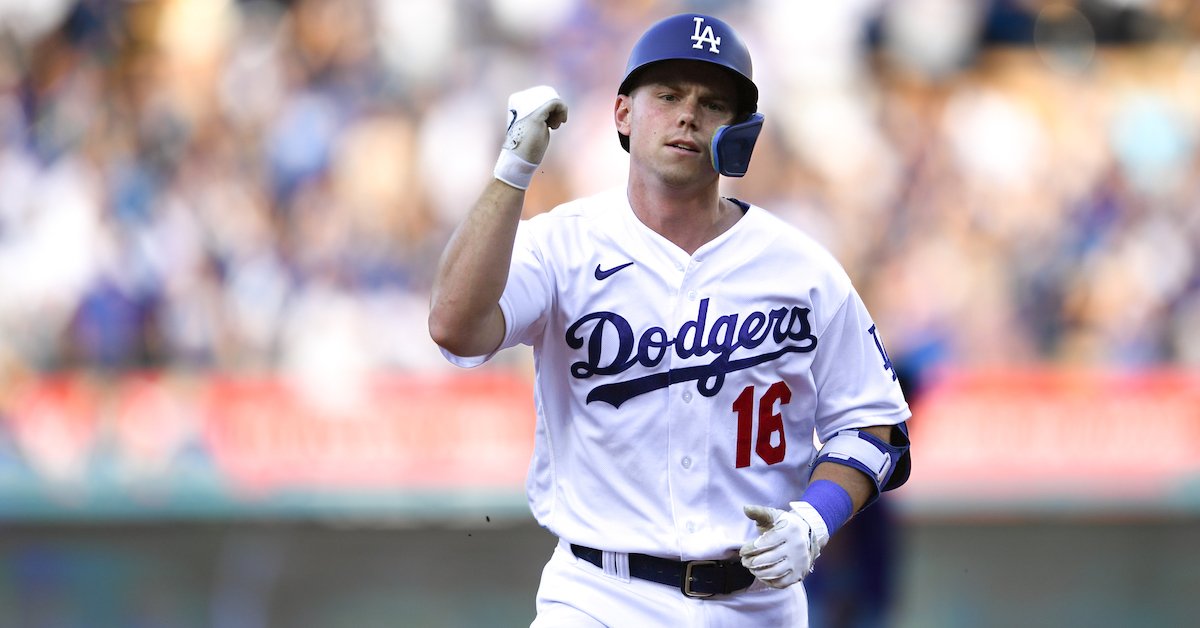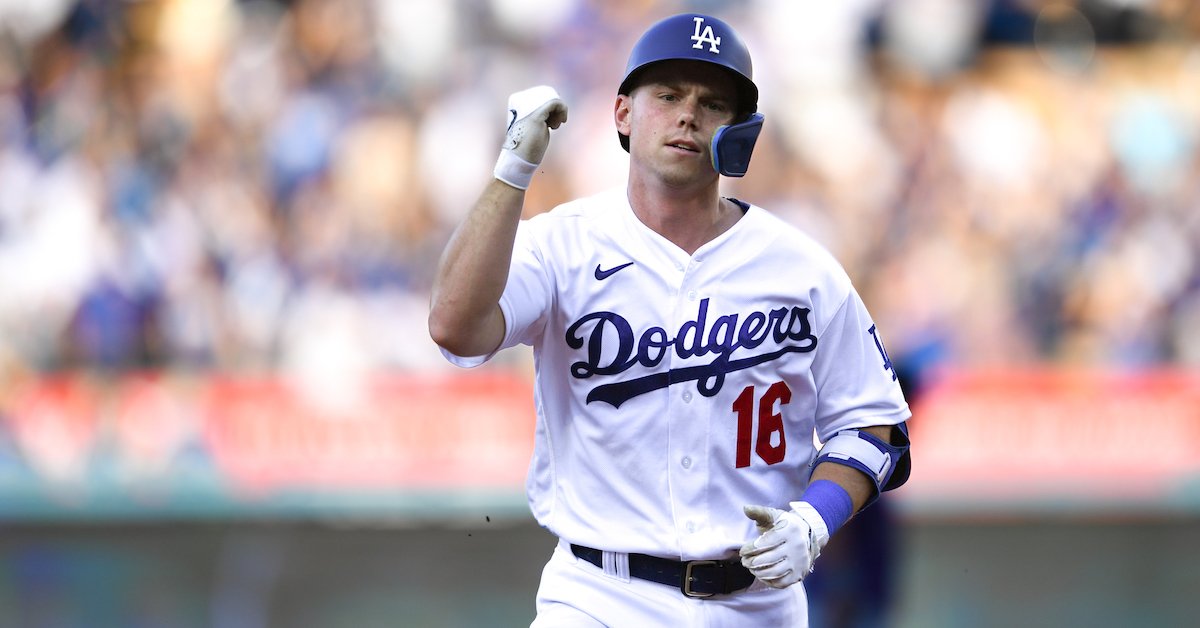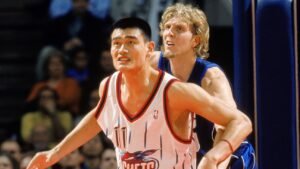[ad_1]

Mookie Betts, Shohei Ohtani, and Yoshinobu Yamamoto walk into the Dodgers clubhouse in 2032, where… they’re greeted by Will Smith. There’s no punchline to this setup because it’s not joke, as the All-Star receiver has joined those other three Dodgers in inking a deal that’s at least a decade long. On Wednesday, the day before his 29th birthday, Smith agreed to a 10-year, $140 million extension.
Smith has already helped the Dodgers win a World Series and established himself as one of the game’s preeminent catchers. He’s second in WAR among catchers since 2019, the year he debuted, with his 15.8 WAR trailing only the 19.8 WAR of J.T. Realmuto, who took nearly 500 more plate appearances over that same stretch. He’s tops among all catchers for the 2021–23 stretch with 12.9 WAR, a span over which he and Realmuto (who had 12.6 WAR) had nearly identical PA totals. Though he still had one more year after this one before becoming eligible for free agency, he and the Dodgers had wanted to hammer out a long-term deal for a while, so much so that according to MLB.com’s Juan Toribo, the two sides had engaged in extension discussions “each of the last few seasons.”
Smith is coming off an admittedly uneven season. Though his 119 wRC+ was the lowest mark of his five-year career, he posted his second-highest WAR (4.4). He hit .261/.359/.438 with 19 homers in 554 plate appearances, but tailed off after a hot start:
Will Smith 2023 Splits
Split
PA
HR
BB
SO
Barrel%
AVG
OBP
SLG
wRC+
1st Half
288
13
44
39
8.0%
.279
.396
.494
144
2nd Half
266
6
19
50
5.3%
.242
.320
.381
91
Smith made his first All-Star team (!) on the strength of that first half, but even then, all wasn’t quite well. On April 12, he suffered a concussion when a foul ball hit his mask and missed two weeks of action. Three days after returning, on April 30, he was hit by a Jake Woodford sinker. He suffered a broken rib and an oblique strain but played through them, and doing so created some bad habits with regards to his mechanics. From a September 22 piece by Jack Harris in the Los Angeles Times:
Instead of his typically smooth, compact inside-out swing, Smith said his bat path has been too “out to in” lately, leading to more whiffs and mis-hits on pitches he used to crush.
He said his front side is opening up too much, causing him to cut across the ball instead of driving it with his easy pop.
… Added [manager Dave] Roberts: “There was probably a little bit of guarding [the injury] initially after. And then when you’re talking about the rib, the oblique, that sort of dovetails into some changed mechanics.”
Particularly with the Dodgers’ awareness of his slump, the team probably should have dialed Smith’s workload back a bit more than it did; he matched his 2022 total of 106 starts behind the plate but DHed only 14 times, compared to 25 the year before. He had enough success in ironing out his mechanics that he went 5-for-12 with a double and a triple in the Dodgers’ three-and-out Division Series loss to the Diamondbacks, and he’s off to a 6-for-14 start this year, so there’s no reason to think he’s permanently broken.
As for the contract, it’s the longest ever for a catcher, surpassing the eight-year extensions of Joe Mauer, Buster Posey, and Keibert Ruiz, who came up in the Dodgers’ system, generally a level behind Smith, before being traded to the Nationals in the Max Scherzer blockbuster in 2021. Smith’s deal isn’t nearly as lucrative as either the Mauer or Posey ones for $184 million and $167 million — and that’s without adjusting for inflation, as both of those were signed more than a decade ago. In terms of unadjusted average annual value, Smith’s $14 million a year ranks just 12th among catchers historically and fourth currently, according to Cot’s Contracts. On an annual basis, that $14 million average comes to only about 60% of the $23.1 million that Realmuto, the game’s highest-paid catcher, is making.
That AAV requires adjustment, however, because as with the Ohtani and Betts deals — and those of Freddie Freeman and Teoscar Hernández, so long as we’re on the subject of the Dodgers — a significant amount of the money is deferred. In his case, it’s $50 million, with the team paying out $5 million a year from 2034–43. That reduces the AAV of Smith’s deal to $12.24 million for Competitive Balance Tax purposes, about 53% of what Realmuto (who himself deferred half of his $20 million 2021 salary) is making.
Structure-wise, according to MLB.com’s Mark Feinsand, Smith will receive a $30 million signing bonus — half payable on November 15, the other half on January 15 — and be paid $13.55 million this year (replacing the one-year, $8.55 million contract he signed in January), then $13 million a year for 2025–27, $9.5 million for ’28-32, and $9.95 million for ’33. That’s a cool breeze running through Guggenheim Baseball Management’s bank account; in 2028, Betts will be taking home more than three times as much ($30 million), and Yamamoto nearly that ($26 million). While he doesn’t have explicit no-trade protection, he’ll reach 10-and-5 status in mid-2028, and his contract has one other provision that protects him: If he’s traded, the deferred money becomes payable in season, meaning that the acquiring team will take a larger CBT hit unless the two sides agree to a similar arrangement.
Even given the length of the deal, ZiPS is surprisingly optimistic about Smith. Via Dan Szymborski:
ZiPS Projection – Will Smith
Year
Age
BA
OBP
SLG
AB
R
H
HR
RBI
BB
SO
SB
OPS+
DR
WAR
2024
29
.259
.355
.452
471
74
122
21
78
61
94
2
118
5
4.2
2025
30
.252
.349
.436
472
72
119
20
76
61
95
2
112
4
3.8
2026
31
.251
.347
.430
467
70
117
19
72
60
96
2
110
3
3.6
2027
32
.243
.339
.407
457
65
111
17
68
58
95
2
102
2
2.9
2028
33
.240
.337
.401
441
62
106
16
62
55
94
2
100
1
2.6
2029
34
.233
.328
.383
420
56
98
14
57
51
92
1
93
1
1.9
2030
35
.232
.328
.375
392
51
91
12
52
48
87
1
91
0
1.7
2031
36
.231
.327
.372
363
47
84
11
46
44
81
1
90
-1
1.4
2032
37
.227
.321
.360
361
44
82
10
45
42
81
1
85
-2
1.1
2033
38
.224
.317
.349
312
37
70
8
37
36
71
1
82
-3
0.7
That’s 23.9 WAR over the life of the contract, with 17.1 WAR in the first half of the deal, a very strong return. In fact, the ZiPS suggested contract for this projection is $164 million over 10 years, but once the deferred money is accounted for, the Dodgers are paying him the equivalent of about 75% of that in present value. This is a very good deal for them, and if it seems like Smith is getting the short end here, it’s just that the two sides have figured out a mutually advantageous way of structuring the payments. To these eyes, the way it makes the most sense is to think of that signing bonus and the higher salaries of the first four years as one deal that without deferrals averages out to $20.6 million a year over the next four years (which would be the second-highest AAV for a catcher, surpassing Salvador Perez’s $20.5 million), and then about $9.6 million per year for the last six, a little less than the $10.15 million James McCann is making as a well-compensated backup.
Particularly in the wake of the Ohtani contract, I’ve seen complaints that the Dodgers’ penchant for using deferred money is somehow a subversion of the Competitive Balance Tax system — as if that were sacrosanct — and therefore bad for baseball. I don’t find this notion particularly convincing. The league and the owners knew exactly what they were doing when they designed this system; as former MLBPA executive subcommittee member Collin McHugh told The Athletic recently, “They’re better at finding loopholes in the system because that is their job, to maximize profit” for the 30 owners. Does anyone out there actually think that even the most miserly of the multimillionaires and billionaires who own teams got filthy rich without understanding the time value of money and the advantages, tax-related and otherwise, of spreading out large payments? The concept permeates our society; not all of us are fortunate enough to have socked away money for retirement, but at some point, most of us have been encouraged to participate in a pension plan, 401k, or IRA that provides tax advantages and spreads out our income to compensate for lesser earnings down the road.
As for the players and owners, in December the Wall Street Journal’s Linsdey Adler and Richard Rubin reported that the owners have proposed limits on the amount of salary that can be deferred, with one 2021 proposal including a full ban, but the MLB Players Association rejected the idea. Understandably, they have no incentive to give up that right without receiving major concessions in return. Maybe they’d agree to forgo deferrals if the owners were to allow players to reach eligibility for arbitration and/or free agency more quickly, but we all know that’s not happening anytime soon.
Anyway, it’s not like the Dodgers, who now have $915.5 million worth of deferrals on their books for the salaries of Betts, Freeman, Hernández, Ohtani, and Smith, are doing this while avoiding paying the CBT. They’re well past the fourth-tier threshold of $297 million, and figure to be paying taxes annually for the foreseeable future, with increasingly steeper penalties and the risk of an inflexible roster; it’s hardly inconceivable that some of these contracts could go south and cause the Dodgers headaches down the road. As for Smith, he’s now got a handsome deal that rewards him for his place as part of the team’s foundation, with protection from the cumulative impact of so many innings behind the plate. Good for him, and good for the Dodgers.
[ad_2]
Source link


